Latest posts by Devin McKinney (see all)
- What John Lennon Thinks of Donald Trump - November 14, 2016
- The Meaning of Fun: The Paul is Dead Rumor - February 3, 2016
- BEATLES-STREEP-SHEA SHOCKER: IT’S NOT HER!!!! - August 13, 2015
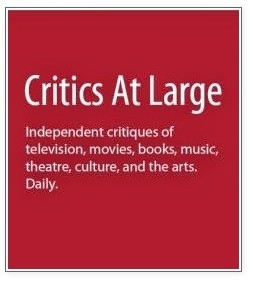 DEVIN McKINNEY • While the world waits for the sunrise, and Hey Dullblog for the opinion of honorary Brian Epstein Fan Club president Mike Gerber, take a look at David Kidney’s review of the fantastic-seeming graphic novel The Fifth Beatle: The Brian Epstein Story, by writer Vivek Tiwary and artists Andrew Robinson and Kyle Baker. Posted over at my “other” blog outlet, Critics at Large, Kidney’s review gives enough flavor of the visual and textual of the book to get you wondering how much you’d be willing to spend on one of its numerous permutations: Standard; Deluxe; Super Deluxe Limited Edition, signed; or e-book for Kobo or Kindle.
DEVIN McKINNEY • While the world waits for the sunrise, and Hey Dullblog for the opinion of honorary Brian Epstein Fan Club president Mike Gerber, take a look at David Kidney’s review of the fantastic-seeming graphic novel The Fifth Beatle: The Brian Epstein Story, by writer Vivek Tiwary and artists Andrew Robinson and Kyle Baker. Posted over at my “other” blog outlet, Critics at Large, Kidney’s review gives enough flavor of the visual and textual of the book to get you wondering how much you’d be willing to spend on one of its numerous permutations: Standard; Deluxe; Super Deluxe Limited Edition, signed; or e-book for Kobo or Kindle.

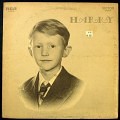


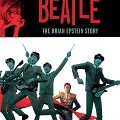
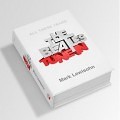


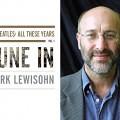

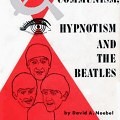


“the opinion of honorary Brian Epstein Fan Club president”
Only honorary until the paperwork goes through, Devin.
I have some very specific reasons for admiring Brian Epstein (no, not that one) which will, God willing, become very clear before the year is out. Arranging this potentially massive endeavor is largely why I haven’t yet purchased “The Fifth Beatle.” That, and stuff like this:
How am I supposed to take comics–sorry, sequential art–seriously as a goddamn art form when it shows this kind of artistic judgment? Just tell the damn story, it’s a great story. Dig deep into it, below the surface. Chronology gives you all the connective tissue you need. Break the form into what you need it to be; trust me, your readers know more about Sixties Britain than The League of Extraordinary Gentlemen’s readers know about Victorian Britain.
I think the problem here is simply this: the writer wanted this to feel like a treatment for a screenplay (which it has become); and the publisher wanted the market to be young people, and so certain things are done to satisfy them–it’s the same attitude that made people colorize movies for a brief, tragic period. But writers like Alan Moore and Neil Gaiman have shown that there’s no need to pander in this way. JUST TELL THE STORY.
My quibbles aside, it seems to be catching on, and I’m very glad for that. I’ll read the book and get back to y’all. Devin, have you read it? Talk me off the ledge here.
Mike, I haven’t read The Fifth Beatle, and wasn’t going to make a point of it. I was a comic-book kid (Marvel, not DC), but I’m not a graphic-novel adult. One hand is sufficient to number the GNs I’ve read, and they’ve all been approximately brilliant–usually too much so. Some of the best minds around are probably working in that form, but it’s ill-suited, I find in my one-handed experience, to depictions of silence, loneliness, introspection, the dull or languorous longueurs of life as it is often lived. The density of GNs, all that fiercely compacted text and imagery and marginalia and pictorial slash, usually feels assaultive to me, as if firecrackers and landmines were going off every second.
I will say, though, that Art Spiegelman’s Maus was a worthy experience–if I may apply such a fatuous word to a work considered by some to be among the premiere explorations of the core horror of the 20th century.
As for the kind of narrative sap or sop represented by “Moxie,” ehh. The kind of thing being described doesn’t, on its face, offend me. Moxie’s equivalent sisters and brothers, uncles and cousins are all through artists I love, like Hitchcock and Dickens. They are the maguffins and blank screens, the enablers of a certain kind of popular narrative for which I have all kinds of affection.
My only problem with JUST TELL THE STORY is that if it were truly that simple, each of us could and would do the work of telling it ourselves. Lay the known facts end to end in the proper order, run through it, say “Yep, that’s the story,” and move on to something else forever. We certainly wouldn’t require or desire anyone else, artist or biographer or critic, to represent it in multiple unique ways. Clearly there’s something about the Brian Epstein story (a title used not just by the present graphic novel but by the unforgettable Arena documentary of 1999) that demands to be JUST TOLD again and again. And again. And, I have no doubt, no doubt at all, again. (Perhaps by a certain Mike Gerber?) That requires strategies, angles, shifts of emphasis and jiggering of factoid and fact, and, occasionally, perhaps even a heart-shaped candy character like Moxie.
Signed,
Devil’s Advocate
I’m with you, Devin, on graphic novels–having also been a Marvel kid, and a devoted reader of the undergrounds. I cherrypick the best; but most of what wows people (the Hernandez Bros., Clowes, Ware, et al) is very hit-or-miss with me. The art’s always superb, but the story often leaves something to be desired.
I think Alan Moore’s wonderful–you can see the meticulous level of control he exerts on a project, and there’s a depth of vision there that’s impossible not to appreciate. I love his appreciation of historical textures. Spiegelman (who I know a bit) is a giant; maybe only Crumb is his equal, but comparing those two reveals a lot of what’s going on with each. I don’t know if he’s our Bruegel, but Crumb is his own fascinating car-crash. Spiegelman spent years honing that particular material; so much of the frisson of Maus comes from the juxtaposition of that particular graphic style and that particular topic; there won’t be another graphic novel like it. The closest thing I ever read was something called Stuck Rubber Baby by Howard Cruse, about a gay man living in the South during the Civil Rights years. So I guess to pack a Maus-like punch one needs truly epochal raw material. What do you think of American Splendor and it’s “dull or languorous longueurs of life as it is often lived”?
I guess ace storytelling and draughtsmanship are gifts very rarely combined in one individual; and I can’t help but feel that much of the popularity of graphic novels today has as much to do with a certain economy and efficiency of form, as with quality. They’re like reading novels, but quicker–and I can’t help but feel that a lot of the graphic novel’s pretension to being “grownup” comes from the desire of graphic novel readers to feel grownup…without having to plow through all those words. This, too, is a function of our time.
You’re kind to suggest that I take a crack at Brian’s story, but my gifts are not suited for it. I have tremendous sympathy for the guy, and sense that his story is the secret heart of the whole Beatles saga–but my mind is not a biographer’s mind. My own voice is much too strong.
What I meant by “Just tell the story” can be seen in Ken Burns’ “The Civil War,” for example. If one achieves a certain level of mastery of the material, a depth of knowledge, the stories and throughlines emerge. Dramatic shapes resonate because they are compressions of life, and whatever “The Fifth Beatle” is trying to do could be done realistically, but it would have to be novel-quality storytelling, not comic book stuff. Hitchcock and Dickens were creating fictional worlds; Tiwary is not, and so to me at least it is fair to flare a nostril at the device.
On the one hand, “The Fifth Beatle” is very, very pretty, and it’s possible to spend hours just looking at it. On the other, the story being told veers from what could be seen as gross, possibly deliberate negligence with regard to historical fact (and factoid) to providing interesting and colorful detail on sections of Brian’s life the average Beatlefan may not previously have bothered digging into (there’s a lot of Dizz Gillespie in there, for instance, and there’s an extended, uhm, “synaesthetic“ scene in which Brian meets Colonel Parker).
The writer, Vivek J Tiwary, has this to say about his rather un-nerdy deviations from the established timeline:
“Beatles historians might rightly question some points of history in The Fifth Beatle. (…) If ‘The Fifth Beatle’ were a film, we might include an end credit like ‚This story is based on actual events. In certain cases incidents, characters, and timelines have been changed for dramatic purposes.’ But that disclaimer reads more like a legal attempt to cover one’s ass than a heartfelt attempt to capture the essence of a man.'”
Once again, I’ll read it and I’m sure will find many things to appreciate/admire/enjoy in it. But just from what you say, @Velvet, I’m disheartened. Sounds like melodrama, and Brian Epstein is already trapped in a twilight of mythology.
I’ll take a look at it, but remain unexcited about the prospect for the reasons you and Devin give — the odor of melodrama and the unsuitability of the form for scenes of introspection. It’s in those scenes of introspection that I think significant parts of Epstein’s real drama occurred. I recall Demi Moore explaining that the film of “The Scarlet Letter” had a happy ending because the novel was “dense and uncinematic.”
Also: they had to name that character MOXIE? I’m not sold on the perky girl go-between as a necessity, but for the love of Mike if we must have her avoid giving her a name that literally could not be more cliched.
The artwork is mostly lovely – dynamic, detailed and expressive. The few frames covering Brian’s first glimpse of The Beatles at The Cavern really capture his feelings for the boys. As something to flick through and look at – as a series of illustrations – it’s pretty good.
The big problem with the book, however, isn’t just with its loose approach to the story. The whole thing doesn’t work mainly because the dialogue is so stilted and hammy. So much so that after reading it I assumed that the problem was that it had been (badly) translated from a foreign language. It gets nowhere near to capturing The Beatles’ sharpness and quick wit. In fact, it renders the boys themselves as mere bit part players – and quite charmless, ordinary ones at that – in their own story.
In all, it’s a rather disappointing effort, albeit an admirably noble one.
Thanks for this discussion. I have not yet read the novel, fearing exactly the sorts of problems that have been brought up above. I think now that I might not get my own copy.
Many people seem to want to praise the effort to tell Brian’s story despite sort of holding their nose over this effort, and that appears to hold some folks back from giving this book an all-out negative review. But a noble failure is still a failure.
@Mike, far be it from HD to depress sales of a Beatles-related project, but my sense is that we’re well past the point where just telling Brian’s story is satisfactory. In addition to all the print sources, there’s the amazing 1998 documentary (which you can watch on HD). Everybody who cares to know about Brian, knows about him; what’s needed now is truly new information and analysis.
BTW, when I say “just tell the story” above, I’m not suggesting that narratives shouldn’t dig deeper, or even that authors shouldn’t speculate. What I’m saying is, there’s no need for tricks that simplify the story for the sake of casual fans, or solve problems that really should be solved by story structure.